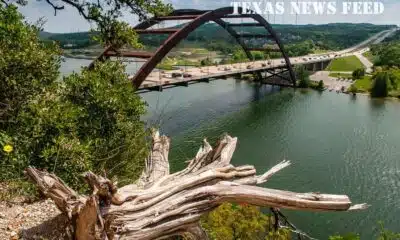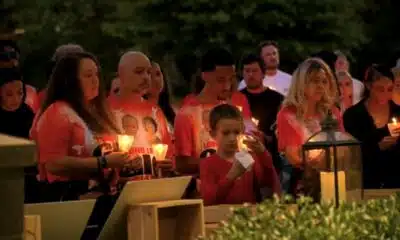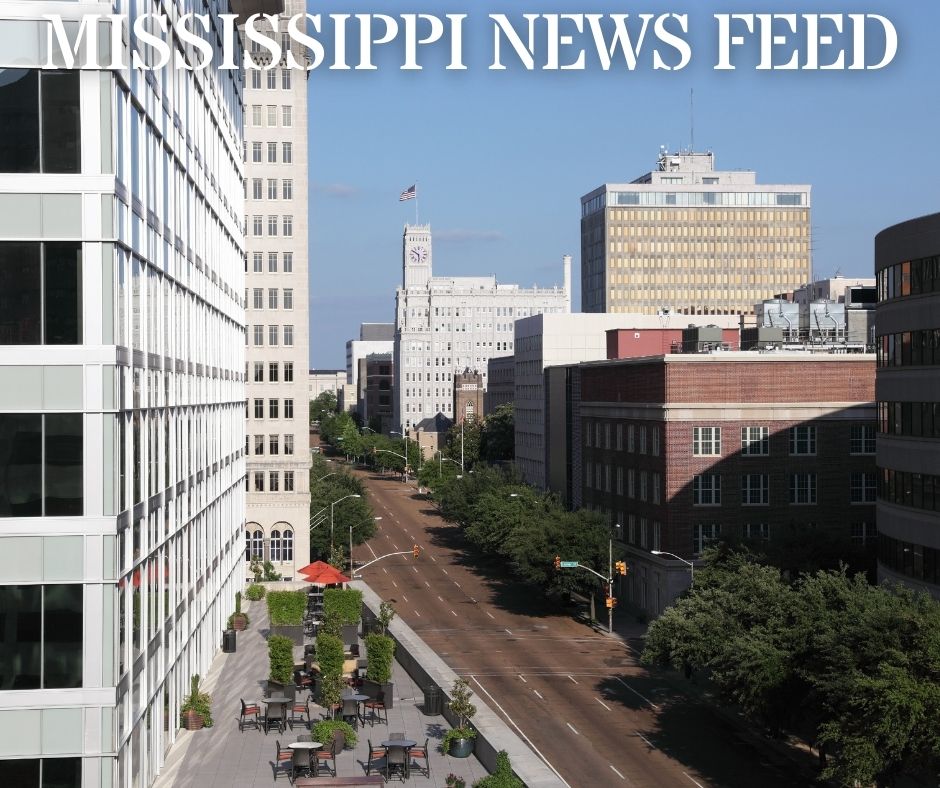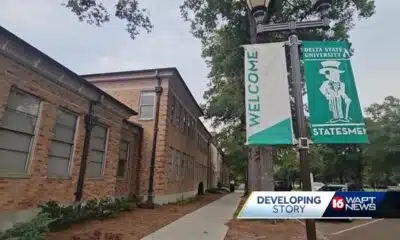News from the South - North Carolina News Feed
Asheville Mayor, Buncombe officials among delegation headed to D.C. to appeal for more Helene assistance • Asheville Watchdog
Carrying a list of staggering losses and needs and initial requests totaling more than $2 billion, public officials from Asheville and Buncombe County will travel to Washington, D.C., on Wednesday to ask federal agencies and Congressional representatives to “add a zero” to the amount of federal aid for storm-ravaged western North Carolina.
The delegation of local leaders from across the region — including Asheville Mayor Esther Manheimer, Buncombe County Commissioners Amanda Edwards and Parker Sloan, Canton Mayor Zeb Smathers, Madison County Manager Rod Honeycutt, Lake Lure Mayor Pro Tem Dave DiOrio, and Chimney Rock Mayor Peter O’Leary, among others — will meet Gov. Roy Cooper at the White House on Wednesday and join with Gov.-Elect Josh Stein to meet with Congressional staffers on Thursday.
The delegation of regional officials traveling to Washington is believed to be unprecedented, but “we have literally never seen a disaster like Hurricane Helene,” Edwards, Chair-Elect of the county commission, told The Watchdog. “There’s literally nothing to compare it to. I think it’s important [for federal officials] to see that we’re not operating just in our own city, county, and municipality silos. I think that has to make our request even stronger.”
The Buncombe County delegation shared with Asheville Watchdog a two-page draft document, “Preliminary Hurricane Helene Relief Needs,” that they will deliver to federal officials. The document cites short-term needs for the county that include:
- $300 million to repair, replace, or construct housing units damaged or destroyed by Helene. An estimated 4,200 residential buildings and 400 commercial buildings were significantly damaged by floodwaters and landslides, including more than 500 structures completely swept away or destroyed.
- $55 million for county infrastructure, and to offset lost tax revenue from restaurants, hotels, breweries and other local businesses. Compared to last year, the local economy is down 70 percent in revenue since Tropical Storm Helene pummeled the region Sept. 27.
- $50 million to repair or replace more than 600 roads and 100 bridges in the county. Even more roads and bridges are expected to degrade over time because of flooding damage.
- $50 million to restore Buncombe County streambanks and watersheds damaged during the storm, and to repair damage on agricultural lands.
- $50 million to repair, fortify, and create backups for critical services including the power grid, the water system, cellular and broadband services, and other basic community needs.
“This is a reflection of our short-term need, measured in months, and by no means a calculation of our total impact or longer-term need,” Sloan told The Watchdog.
Specific Requests for Asheville
In its own document, “Asheville Helene Request for White House Action,” and a similar document for Congress, the City of Asheville lists its “most urgent needs for ongoing Federal support” and outlines “how Congress and the Federal government can support our greatest areas of need: housing, economic loss, potable water provision and quality, infrastructure, transportation, and long-term resiliency.”

“As the economic driver of the region, the City’s physical and economic recovery will determine how western North Carolina moves forward for years to come,” the document states.
Manheimer said the sum of the city’s requests would total somewhere between $1.7 billion and $2 billion. Those numbers include federal reimbursement to FEMA and the Small Business Administration and other federal agencies for assistance already given, she said, as well as costs to rebuild and repair infrastructure and buildings and clean up storm debris.
“We have specific asks, specific to Asheville, around resiliency, and the water system, addressing housing needs, and business recovery,” Manheimer said.
Sloan said the delegation hopes to “put a face to the issue” by meeting with U.S. Sens. Thom Tillis and Ted Budd and U.S. Rep. Chuck Edwards, White House and Congressional staff, and agencies including Housing and Urban Development and the Federal Emergency Management Agency.
The delegation also plans to meet with members or staff of the House and Senate Appropriations Committees and subcommittees, which are seen as the most important venues for securing necessary funding, Sloan said.
Congress recently re-convened after the November elections, and Sloan said the hope is to persuade lawmakers to pass emergency aid between Thanksgiving and the end of the year.
Unemployment rate: 12% and rising
The group plans to “convey the seriousness of the situation” in post-Helene Asheville and Buncombe County, where 43 people were killed by the storm. In total, more than 100 people were killed by the storm and its effects in western North Carolina.

For Buncombe alone, Sloan cited a local unemployment rate that has soared to 12 percent and is expected to rise, and 26,172 disaster-related unemployment claims. Hundreds of local businesses have either closed or relocated, he said.
The county calculated lost business revenues of more than $584 million for what normally is the busiest quarter of the tourism season, as receipts plunged for restaurants and breweries, lodging, recreation and entertainment companies, retail shops and art galleries, and transportation companies.
“These losses in revenue impact the County’s property, sales, and occupancy tax rates which ultimately support the programs and services needed to maintain existing public safety, emergency management and other functions,” the county officials stated in the document they plan to present in Washington.
Noting that Tropical Storm Helene was the most destructive storm to hit North Carolina in modern history, and quite different from hurricanes that have hit the state’s Atlantic coast, Sloan said the group’s goal is to persuade federal officials that Helene was uniquely damaging and deserves a unique level of aid.
“Whatever funding metrics people think about for these types of things, they should add a zero to the end,” Sloan said.
Assembly ties disaster aid to politics
In Raleigh, the General Assembly of North Carolina on Tuesday was considering an omnibus disaster recovery act that would immediately transfer an additional $227 million in state funding to the Helene recovery fund. But Republicans in the Assembly have made the extra relief money contingent on transferring authority over the state’s Board of Elections to the state auditor’s office, a move that would place administration and appointment of its members under GOP control and strip the authority from Gov.-Elect Josh Stein, a Democrat.
Senate Bill 382 would also tie western North Carolina’s relief money to significant statewide changes to public education, law enforcement, the duties of the attorney general, environmental protection, public utility oversight, and the state judiciary.
“I think it’s really unfortunate that we could not have a separate bill that addresses the hurricane relief, and that it had to be lumped into other controversial measures,” County Commission Chair-Elect Edwards told The Watchdog. “Our county, and our region, has been devastated in a way we’ve never seen before, and for our needs and the suffering of our residents and small businesses to get mixed in with other controversial measures, it should not be happening,” Edwards said.
But, Edwards said of the delegation to Washington, D.C., “Hopefully we’ll be coming back Thursday night with some great news and positive outcomes.”
Asheville Watchdog is a nonprofit news team producing stories that matter to Asheville and Buncombe County. Peter H. Lewis is The Watchdog’s executive editor and a former editor at The New York Times. Contact him at plewis@avlwatchdog.org. Sally Kestin is a Pulitzer Prize-winning investigative reporter. Email skestin@avlwatchdog.org. To show your support for this vital public service go to avlwatchdog.org/donate.
Related
The post Asheville Mayor, Buncombe officials among delegation headed to D.C. to appeal for more Helene assistance • Asheville Watchdog appeared first on avlwatchdog.org
News from the South - North Carolina News Feed
White House officials hold prayer vigil for Charlie Kirk
SUMMARY: Republican lawmakers, conservative leaders, and Trump administration officials held a prayer vigil and memorial at the Kennedy Center honoring slain activist Charlie Kirk, founder of Turning Point USA. Kirk was killed in Utah, where memorials continue at Utah Valley University and Turning Point USA’s headquarters. Police say 22-year-old Tyler Robinson turned himself in but has not confessed or cooperated. Robinson’s roommate, his boyfriend who is transitioning, is cooperating with authorities. Investigators are examining messages Robinson allegedly sent on Discord joking about the shooting. Robinson faces charges including aggravated murder, obstruction of justice, and felony firearm discharge.
White House officials and Republican lawmakers gathered at the Kennedy Center at 6 p.m. to hold a prayer vigil in remembrance of conservative activist Charlie Kirk.
https://abc11.com/us-world/
Download: https://abc11.com/apps/
Like us on Facebook: https://www.facebook.com/ABC11/
Instagram: https://www.instagram.com/abc11_wtvd/
Threads: https://www.threads.net/@abc11_wtvd
TIKTOK: https://www.tiktok.com/@abc11_eyewitnessnews
News from the South - North Carolina News Feed
Family, friends hold candlelight vigil in honor of Giovanni Pelletier
SUMMARY: Family and friends held a candlelight vigil in Apex to honor Giovanni Pelletier, a Fuquay Varina High School graduate whose body was found last month in a Florida retention pond. Giovanni went missing while visiting family, after reportedly acting erratically and leaving his cousins’ car. Loved ones remembered his infectious smile, laughter, and loyal friendship, expressing how deeply he impacted their lives. His mother shared the family’s ongoing grief and search for answers as authorities continue investigating his death. Despite the sadness, the community’s support has provided comfort. A celebration of life mass is planned in Apex to further commemorate Giovanni’s memory.
“It’s good to know how loved someone is in their community.”
More: https://abc11.com/post/giovanni-pelletier-family-friends-hold-candlelight-vigil-honor-wake-teen-found-dead-florida/17811995/
Download: https://abc11.com/apps/
Like us on Facebook: https://www.facebook.com/ABC11/
Instagram: https://www.instagram.com/abc11_wtvd/
Threads: https://www.threads.net/@abc11_wtvd
TIKTOK: https://www.tiktok.com/@abc11_eyewitnessnews
News from the South - North Carolina News Feed
NC Courage wins 2-1 against Angel City FC
SUMMARY: The North Carolina Courage defeated Angel City FC 2-1 in Cary, ending their unbeaten streak. Monaca scored early at the 6th minute, followed by Bull City native Brianna Pinto’s goal at the 18th minute, securing a 2-0 halftime lead. Angel City intensified in the second half, scoring in the 88th minute, but the Courage held firm defensively to claim victory. Pinto expressed pride in the win, emphasizing the team’s unity and playoff ambitions. Nearly 8,000 fans attended. Coverage continues tonight at 11, alongside college football updates, including the Tar Heels vs. Richmond game live from Chapel Hill.
Saturday’s win was crucial for the Courage as the regular season starts to wind down.
https://abc11.com/post/north-carolina-courage-wins-2-1-angel-city-fc/17810234/
Download: https://abc11.com/apps/
Like us on Facebook: https://www.facebook.com/ABC11/
Instagram: https://www.instagram.com/abc11_wtvd/
Threads: https://www.threads.net/@abc11_wtvd
TIKTOK: https://www.tiktok.com/@abc11_eyewitnessnews
-
Local News6 days ago
DNA evidence found near scene of Charlie Kirk’s shooting matches suspect, FBI director says
-
News from the South - Florida News Feed6 days ago
Orlando restaurant owner invites artists to parking lot amid federal fight against street art
-
Mississippi News Video6 days ago
The Mustard Seed
-
Our Mississippi Home6 days ago
Family of Curious George Creators to Visit de Grummond in Hattiesburg
-
SuperTalk FM5 days ago
Hyde-Smith, Warnock team up to recognize Gold Star Families Remembrance Week
-
News from the South - Georgia News Feed7 days ago
Jonesboro band culture responsible for global legacy | FOX 5
-
Mississippi News Video5 days ago
‘Little quiet light’: Family remembers Delta State University student found dead on campus
-
News from the South - North Carolina News Feed7 days ago
White House officials hold prayer vigil for Charlie Kirk












































